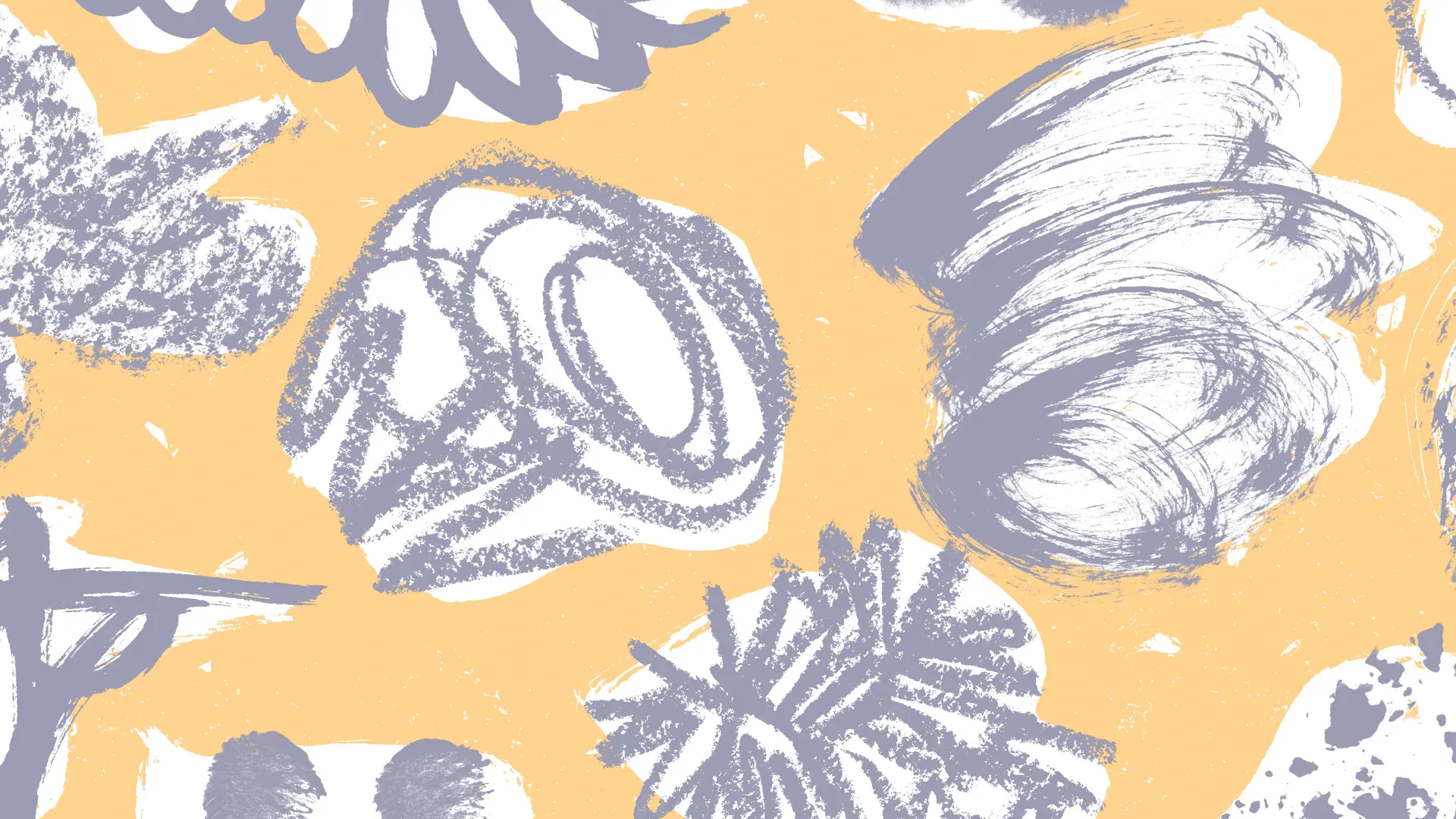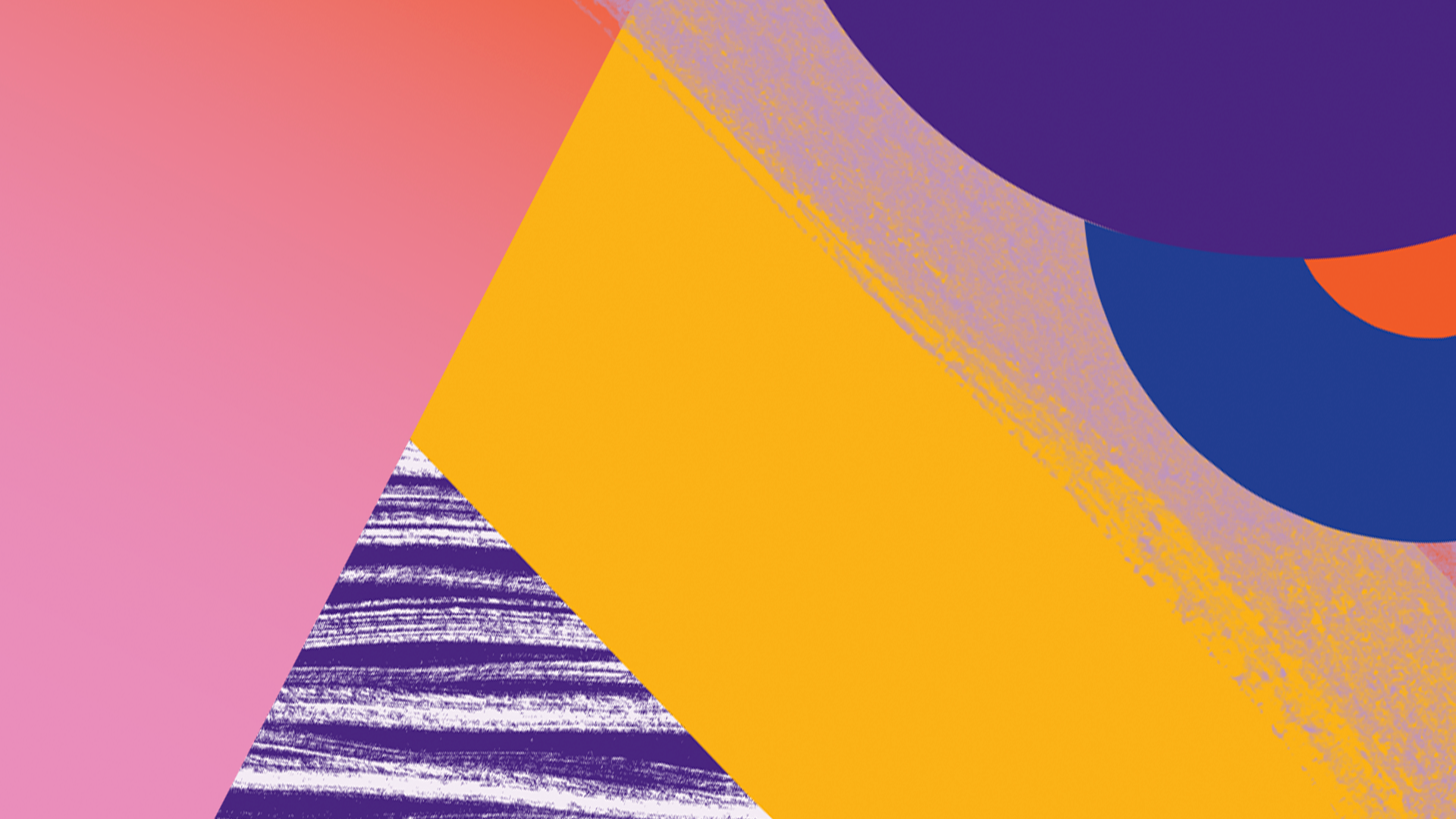Breadcrumb
A psychosocial hazard is anything that could cause psychological harm (e.g. harm someone’s mental health) and sometimes their physical health.
In creative workplaces, these might stem from:
- the nature of projects — for example, working with traumatic subject matter
- how people behave at work — including being subjected to bullying, harassment or discrimination or being in a culturally unsafe workplace
- team dynamics and how people interact
- external pressures like audience reactions or media coverage.
Psychosocial hazards can create stress. Stress itself is not an injury, but if workers are stressed often, over a long time, or the level of stress is high, it can cause harm.
Psychosocial hazards can affect health by causing:
- psychological harm — such as anxiety, depression, burnout, post-traumatic stress disorder or sleep disorders
- physical harm — such as musculoskeletal injuries, high blood pressure, chronic disease or fatigue related injuries.
Learn more about what do if a psychosocial hazards results in a workplace incident or injury. A workplace injury is any injury or illness caused by, or that happens in the course of, work. Workplace injuries can include the worsening of an existing condition.
Managing psychosocial hazards is part of managing hazards and risks in the workplace more broadly. Learn more about managing hazards and risks.
PCBUs are legally required to manage hazards and risks. Workers also have a duty to take reasonable care for their own health and safety and follow the reasonable instructions of a PCBU. These legal obligations are called work health and safety (WHS) duties.
Common psychosocial hazards in creative workplaces
|
Type of hazard |
Some common examples |
|---|---|
|
Bullying |
Workplace bullying is repeated and unreasonable behaviour that creates a risk to health and safety. Learn more about workplace bullying. |
|
Discrimination |
Discrimination happens when a person is treated unfairly, or less favourably, because of an attribute that is protected under the law (for example, their age, race, disability, religion, sex, sexual orientation, political belief). Discrimination can be direct or indirect. Learn more about workplace discrimination. |
|
Fatigue |
Fatigue is extreme tiredness resulting from mental or physical effort. Safe Work Australia has guidance on managing the risk of fatigue at work |
|
Harassment |
Harassment is any unwelcome behaviour that a reasonable person would consider to be offensive, embarrassing, intimidating, threatening or humiliating. There are extra protections for certain types of harassment, including:
Learn more about workplace harassment. SafeWork Australia has a guide to eliminating and minimising the risk of sexual and gender-based harassment. |
|
Isolated or remote work |
Isolated work is work that happens without other people around who could help if something goes wrong. You can be isolated because of the location, time, or type of work. Remote work is work that is done away from the main workplace. This includes environments with long travel times, limited access to resources, and limited ways of communicating (for example, no phone reception). Safe Work Australia has guidance on Remote or isolated work. |
|
Lack of role clarity |
Lack of role clarity includes unclear expectations or overlapping responsibilities. |
|
Poor management support |
Poor management support includes inadequate guidance, communication, or resources from supervisors. |
|
Work-related violence or customer aggression |
Work-related violence or aggression includes threats, abuse, or harm from clients, customers or colleagues. Safe Work Australia has guidance on preventing workplace violence. |
Keep learning:
Psychologically safe workplaces
Failure to provide a psychologically safe workplace is a psychosocial hazard.
Psychological safety is about creating an environment where workers can speak up, share ideas, ask questions and make mistakes without fear of humiliation or retribution.
Creating this environment supports genuine participation and contribution by all workers as they feel valued and respected.
Psychological safety is important for all workers but is heightened for those from under-represented groups who are more likely to have experience of negative consequences and inequities.
Psychologically safe and inclusive workplaces
WA Government
Keep learning:
Culturally safe workplaces
Failure to provide a culturally safe workplace is a psychosocial hazard.
Cultural safety demands actions that recognise, respect and nurture the unique cultural identity of a person and safely meets their needs, expectations and rights.
It means working from the cultural perspective of the other person, not from your own perspective.
Characteristics that indicate a culturally safe workplace include:
- clear, value-free, open and respectful communication
- trust between workers with all contributions valued
- stereotypical barriers recognised and avoided
- everyone is engaged in a two-way dialogue where knowledge is shared.
What a culturally safe workplace looks like
SafeWork NSW
Learn more about culturally safe workplaces for First Nations peoples in our First Nations relations section.
Ways to identify psychosocial hazards
Some ways to identify common psychosocial hazards include:
- understanding the challenges: start by understanding how the workplace and work processes might impact mental health. This includes considering worker job demands, control over their work, and support systems available to workers.
- talking to the team: having regular open conversations with staff, contractors and collaborators is important to uncover psychosocial hazards. Workers often have firsthand insights into risks that others might not notice.
- using feedback tools: using surveys or feedback forms is a good understand experiences and perceptions of work conditions. This can identify patterns or recurring issues.
- reviewing work practices: looking at workflows, workloads, and interpersonal dynamics helps identify hazards in everyday ways of working. Consider high-stress periods, isolated roles, and areas prone to conflict.
- analysing past incidents: trends in workplace grievances, injuries or worker turnover that might indicate psychosocial risks. Looking for patterns can point to underlying issues requiring attention.
In practice:
Lack of role clarity at the theatre company
A lack of role clarity is causing disputes between stage crew and directors.
The stage manager has assumed leadership but hasn’t been clear about the overall objectives of the show. There is confusion over managing prop setup and timing scene transitions. The production team have found themselves double-handling tasks, creating frustration and delays with rehearsals.
The theatre company:
- updates job descriptions
- provides orientation sessions at the start of each project
- introduces handbooks outlining everyone’s responsibilities.
Assessing psychosocial risks
When assessing psychosocial risk, consider:
- frequency: how often is the hazard present? Are workers exposed to the hazard occasionally, regularly or continuously?
- intensity: how severe are the potential impacts on mental health and wellbeing?
- duration: how long are workers exposed to the hazard?
It is also important to assess how these factors interact:
- A high-intensity hazard that is experienced frequently over a long time presents a greater risk. For example, performing the role of a person experiencing violence in 8 shows per week for 10 weeks in a row.
- A high intensity hazard that only happens once and for a short time has a much lower risk. For example, performing the role of a person experiencing violence once.
Psychosocial, physical and environmental hazards can all feed off each other, like a vicious cycle.
For example, extended exposure to high noise levels during rehearsals with minimal rest breaks and tight deadlines may lead to irritation and concentration difficulties, increasing the risk of stress, and physical injuries among performers and crew.
In practice:
Long, emotionally intense hours on set
Actors who are working extended hours on emotionally intense scenes feel overwhelmed. When interactions between actors and others on set are also tense, the overwhelm can feel even worse.
The production:
- schedules more frequent breaks
- allows flexible shot rescheduling when needed.
Keep learning:
Controlling psychosocial hazards
The goal of managing risk of harm from psychosocial hazards is to:
- eliminate risk wherever possible, and
- reduce any remaining risk to an acceptable level.
Use a hierarchy of control measures to reduce exposure to hazards. Learn more about managing hazards and risks.
Ways to control psychosocial risks
|
How to do it |
Some common examples |
|---|---|
|
Prevent or eliminate risks
|
|
|
Minimise risks where they can’t be prevented
|
|
|
Monitoring and reviewing
|
|
In practice:
Controversial artwork at the gallery
Art gallery attendants who have been assigned to monitor a distant section of the gallery are encountering patrons who are upset about a controversial work of art. Some visitors are being verbally abusive, and the attendants are feeling unsupported and stressed.
The gallery introduces a buddy system during shifts, train the attendants in conflict management, and give them radios to call security for prompt assistance.
The gallery also adds signage near the controversial works to give context to the work and ease visitor concerns.
Keeping records
It is essential to maintain clear and accurate risk management records.
- Keep records of identified risks and control measures implemented.
- Regularly update assessments as conditions change.
- Read more about record keeping obligations.
Learning how to create a mentally healthy workplace
There are some great resources around designed to help businesses, organisations and workers create mentally healthy workplaces. We like:
- NSW Government’s Arts and Entertainment Industry Resource Kit — information on how to create a mentally healthy workplace in the Arts and Entertainment Industry. (It’s helpful for people everywhere, not just in NSW.)
- NSW Mental Health at Work’s Leaders Resource Kit — information to help leaders create a mentally healthy workplace. (You can use it even if you’re not in NSW.)
- Beyond Blue’s Mental Health in the Workplace — great information for both organisations and workers.
Case study: Gallery workers feeling isolated when working alone on night shift
A gallery worker reports feeling vulnerable and isolated while working alone during night shifts to prepare exhibits.
By addressing this worker’s psychosocial risks, the company fosters a safer, more supportive workplace for all workers.
First, they identify the hazard
The gallery identifies the hazard during worker consultations when it receives feedback from night workers. The feedback highlights concerns about personal safety and the lack of support in emergency situations.
Then they assess the risk
The risk is that the worker’s feelings of isolation lead to anxiety and potentially affect their mental health and productivity. There is also an increased likelihood of delayed assistance if an incident occurs, with potentially severe consequences.
They control the risk
To address the risk, the gallery introduces:
- security measures including increased lighting around entry points and routine security patrols
- communication devices including two-way radios or mobile phones, to ensure the worker could contact support in real-time
- regular check-ins where supervisors or colleagues contacted the worker at set intervals to monitor their safety and provide a sense of connection.
They regularly review the controls
The gallery reviews the effectiveness of these measures through worker feedback and incident reports. Routine checks ensure that communication devices are functional, and that workers are following the security protocols.
They look out for other reasons to review the controls
The gallery also reviews and reassesses the risks when:
- it receives reports of worker concerns about isolation
- it introduces new tasks or shifts that could increase isolation
- it receives reports of incidents or near-misses involving an isolated worker
- as part of annual workplace health and safety reviews.
Case study: Circus performers experiencing sexual harassment
Circus performers report inappropriate comments and advances from peers during rehearsals.
First, they identify the hazard
When it receives the reports, the company recognises this behaviour as sexual harassment. Sexual harassment is unwanted or inappropriate conduct of a sexual nature. It is a serious psychosocial hazard that affects the mental health and well-being.
The first thing the company does is address the specific reports of harassment. This involves ensuring that workers are safe, connecting them with support, investigating and addressing the incidents reported.
Learn more about:
The company also takes a WHS approach to managing hazards and risks with the aim of preventing any future harassment.
Then they assess the risk
The risk of sexual harassment can create an unhealthy and unsafe work environment, leading to stress, anxiety, and decreased productivity.
It also increases the likelihood of formal complaints, legal consequences, and reputational damage for the company.
If harassment is not addressed, it can escalate, leading to further emotional and physical harm.
They control the risk
To manage the risk, the company implements:
- clear anti-harassment policies that define unacceptable behaviours and outline steps for handling complaints
- training for all workers and performers on respectful behaviour, how to recognise harassment, and how to report it
- establishing confidential reporting mechanisms that allow workers and performers to safely report harassment without fear of retaliation
- setting up regular check-ins with staff to ensure the work environment remains safe and respectful.
They regularly review the controls
The company regularly reviews the effectiveness of its policies through surveys or feedback from staff and monitoring any reported incidents. They also assess the outcomes of any complaints to improve the process.
They look out for other reasons to review the controls
The company reviews and reassess the risk when:
- it receives an increase in reported incidents or complaints
- it observes changes in team dynamics or performer turnover
- there are updates to legal regulations or industry standards around workplace harassment.
Sexual harassment is a serious issue. Workplaces have obligations and workers have protections beyond WHS laws. Learn more about sexual harassment.
Case study: Customer aggression at a comedy festival
Front of house staff at a comedy festival report dealing with aggressive patrons.
By proactively managing customer aggression, the festival creates a safer and more supportive environment for all workers and attendees.
First, they identify the hazard
The festival team identifies a pattern of aggressive behaviour from intoxicated patrons towards staff, including verbal abuse and threats. They recognise this as a psychosocial hazard that can cause stress, fear, and anxiety among workers.
Then they assess the risk
If left unmanaged, customer aggression can lead to serious mental and physical harm for staff, reduced morale, and increased staff turnover.
It may also impact the festival’s reputation and create an unsafe environment for both workers and other customers.
They control the risk
To manage the risk, the festival organisers implement:
- de-escalation training for staff to help them respond calmly and effectively to aggressive behaviour
- increase security presence at entry points and within the venue to deter and manage incidents
- establish clear incident response procedures so staff know when and how to seek assistance
- creating a reporting system to track aggressive incidents and identify trends.
They regularly review the controls
The organisers review the effectiveness of these measures by analysing incident reports, gathering staff feedback, and assessing security response times.
They make adjustments as needed to improve safety.
They look out for other reasons to review the controls
The organisers also review and reassess the risk when:
- they receive an increase in reported incidents of aggression
- they observe changes in crowd size or festival format
- there are new legal or industry standards for event security and workplace safety.
Case study: Poor management support for game developers
Freelance game developers voice frustration that they’re not receiving clear project directions.
By strengthening management support, the studio improves workflow efficiency, reduces stress, and maintains strong client relationships.
First, they identify the hazard
The creative studio working with the freelance game developers identifies the risk related to poor management support. Developers voice their frustrations in meetings and emails, citing unclear project expectations, last-minute changes, and inconsistent communication. Some threaten to leave due to excessive revisions and lack of direction.
Then they assess the risk
Without clear direction, the developers struggle to align their work with project requirements. Frequent rework leads to extended hours, creating fatigue that affects concentration and creativity. With tight timelines, exhausted developers produce lower-quality work, resulting in further revisions and delays. This cycle strains team morale and risks damaging the studio’s reputation with clients.
They control the risk
To improve management support, the studio:
- establishes structured communication through regular check-ins and clear project updates
- provides detailed briefs and timelines using a shared project tracker, ensuring all developers have real-time access to deadlines, expectations, and progress updates
- offers feedback sessions to address concerns early and support developers’ work
- assigns a dedicated contact person so freelancers know where to seek help.
They regularly review the controls
The studio evaluates the effectiveness of these measures by gathering feedback from developers and monitoring project efficiency.
They look out for other reasons to review the controls
The studio also reviews and reassess the risks when:
- they receive feedback about frustration or threats to leave from developers
- they notice increased rework, extended hours, or declining quality related to the developers’ work
- clients raising concerns about missed deadlines or inconsistent deliverables.
Case study: Lack of role clarity for the film crew
A film company observes escalating tension between crew members and complaints that the crew doesn’t know who is meant to be doing what.
By improving role clarity, the production team reduces stress, enhances efficiency, and creates a more collaborative work environment.
First, they identify the hazard
A film production company identifies confusion among crew members due to overlapping responsibilities, particularly in set design and lighting. This results in delays, frustration, and miscommunication. Crew members express concerns about unclear expectations and conflicting instructions.
Then they assess the risk
If not addressed, lack of role clarity can lead to stress, reduced productivity, and workplace conflict. It may also increase the risk of errors, safety incidents, and project delays.
They control the risk
To manage the risk, the production team:
- defines clear roles and responsibilities by documenting job descriptions and distributing them to all crew members
- holds pre-production meetings to clarify expectations, workflows, and decision-making processes
- assigns a central point of contact for resolving role-related questions or conflicts
- provides structured onboarding for new crew members to ensure they understand their responsibilities from the start.
They regularly review the controls
The company reviews the effectiveness of these measures through crew feedback, production timelines, and incident reports related to miscommunication. They make adjustments to the controls to improve role clarity as needed.
They look out for other reasons to review the controls
The company also reviews and reassesses the risk when:
- they get reports of ongoing confusion or task duplication
- they notice increases in project delays or workflow disruptions
- there are changes in crew structure or production processes.
Case study: First Nations performers touring to remote locations
A touring First Nations performing arts company receives reports from performers of increased loneliness and feelings of isolation.
By addressing these challenges, the company ensures a safer and more supportive environment for performers working in remote areas.
First, they identify the hazard
The performing arts company identifies risks associated with sending First Nations performers to remote communities for shows. Challenges include long travel times, fatigue, limited access to resources, and unreliable communication, leading to stress and isolation.
Then they assess the risk
Without proper support, remote work can result in exhaustion, mental strain, and reduced wellbeing.
The inability to communicate in emergencies or access essential resources may also compromise safety.
They control the risk
In response to these risks, the company takes proactive steps which include:
- planning detailed itineraries that include adequate rest breaks, travel time, and accommodation arrangements
- providing access to reliable communication tools such as satellite phones or emergency contact systems
- offering mental health and cultural support to ensure performers feel safe and connected
- establishing emergency response plans in case of unforeseen situations.
They regularly review the controls
The company reviews the effectiveness of these measures through performer feedback, travel incident reports, and overall well-being checks.
They look out for other reasons to review the controls
The company also reviews and reassess the controls when:
- they receive reports of excessive fatigue or stress
- there is difficulty accessing communication tools or emergency support
- there are changes in travel routes, schedules, or performance locations.
Case study: Fatigue working on location
A film production company knows that working on location comes with risks associated with long working hours, physical demands and environmental factors.
By prioritising crew well-being, the company minimises fatigue-related risks and ensures a safer, more sustainable work environment.
First, they identify the hazard
The company identifies fatigue risks among setup and takedown crews working on location. Long shifts, tight deadlines, and physically demanding tasks lead to exhaustion, increasing the likelihood of mistakes and injuries.
Then they assess the risk
Fatigue affects concentration, decision-making, and reaction times. This makes tasks like heavy lifting, operating equipment, and driving more dangerous. Workers may also experience stress and burnout, impacting overall wellbeing.
They control the risk
To reduce fatigue, the company:
- engages adequate crew numbers to distribute workload evenly and manage the physical demands
- implements shift rotations to prevent excessively long working hours
- sets reasonable work hours and enforces rest breaks to allow crews enough recovery time
- provides rest areas, hydration stations, and nutritious food to support physical well-being
- schedules work efficiently to avoid last-minute rushes that extend shifts.
They regularly review the controls
The company monitors worker fatigue through check-ins, incident reports, and feedback. Supervisors assess whether schedules are realistic and if additional staffing is needed.
They look out for other reasons to review the controls
The company also reviews and reassesses the risk when:
- they receive reports of exhaustion, slow reaction times, or near-misses
- planned work hours are extended beyond planned hours frequently
- they notice increased absenteeism or staff turnover
- there are changes in production schedules requiring longer or more intense work period.
More in this section:
About managing workplace hazards and risks
Identifying hazards and taking proactive steps to manage risks creates safer work environments, prevents injuries and helps workplaces meet their legal obligations. It is crucial for every creative workplace.
Environmental hazards in the workplace
Understanding and controlling environmental hazards is an essential part of creating a safe and healthy working environment for workers and members of the public. It is also key to meeting WHS obligations.
Physical hazards in the workplace
Understanding and controlling physical hazards can create a thriving, safe space for creativity to flourish. It’s also the law (and key to meeting WHS obligations)
High risk work
High risk work is any work that requires a high risk work license. Understand the essential WHS requirements so you can create a safe workplace and meet your legal responsibilities.






